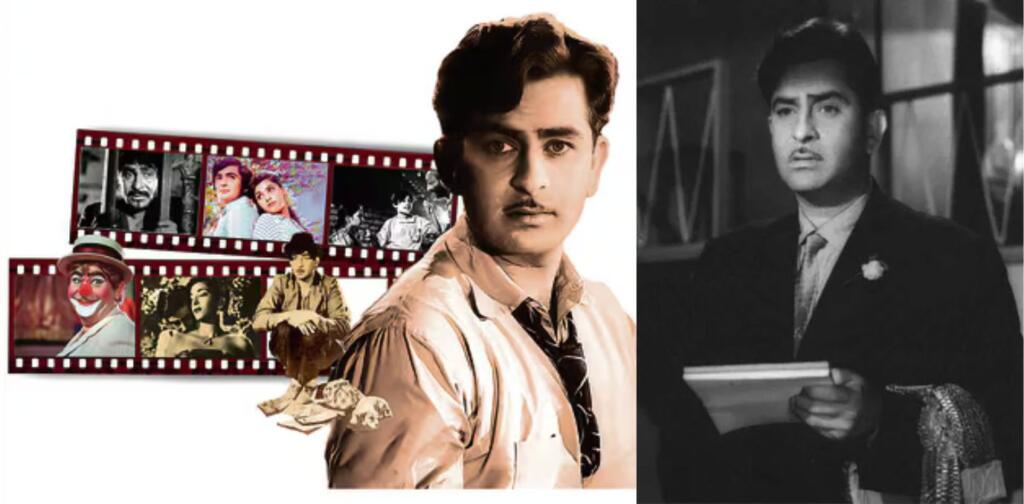Raj Kapoor, the showman of Indian cinema, would have turned a centanarian on December 14, 2024. A century later, he remains an inspiration, as does his larger-than-life persona, and evokes admiration, as do his films, timeless, immortalized not just in the hearts of those who lived through the era of his reign but also in the cinematic lexicon of India. He was more than an actor, director, and producer-in fact, a visionary, an artist, whose films mirrored the pulse of the Indian social fabric, and whose creativity still echoes in the present film industry.
He was born Ranbir Raj Kapoor on December 14, 1924, in Peshawar, and was the eldest son of famed actor and theater personality Prithviraj Kapoor. Raj was born into a family that had a rich theatrical background. He was steeped in the world of performance right from his childhood days. At 17, he decided to drop his studies and join the world of films. His father took imparting discipline as his duty, but he agreed only on a single condition: he would work as an assistant for a stipend of ₹10. Little did anyone know that this boy, haunted with earnest passion, would become one of the most powerful personalities in Indian cinema.
His entry into cinematic direction began as an actor. But it was certain that he was born to be much more than just that: Raj Kapoor was a man destined for behind-the-camera duties. When he was 24 years of age, he directed Aag (1948)—a daring step which became a stepping stone for a tremendous career. By no means he confined himself to the role of an actor – he was an innovator, creator, and risk-taker.
In tackling inner beauty, love, and loyalty in Aag, he forged the very themes around which his later films such as Barsaat (1949), Awara (1951), Shree 420 (1955), Mera Naam Joker (1970), and Satyam Shivam Sundaram (1978) all turned. The films became a mirror to the changing socio-political landscape of post-independence India, and it was Raj Kapoor’s lens that captured with marvelous precision the dreams and struggles of the common man.
Shree 420 was rich with the flavor of Raj Kapoor, crossing over to thrill in Awara. He weaved elements of the hero and heroine’s characters with traits from various social classes. His dedication to his work, as seen in his blending spectacle with human interest, made him a unique phenomenon in Indian cinema. One of the converging points in Raj Kapoor’s films was the collaboration with his core team: writer K. Abbas, cinematographer Radhu Karmakar, composers Shankar-Jaikishen, lyricist Shailendra, and singer Mukesh, all of whom he referred to as a “soul”. For that reason, this team put together some of the songs most remembered in Indian history, which people hum years later. Hits like Awara Hoon, Jeena Yahan Marna Yahan, and Pyar Hua Iqrar Hua came to become anthems for a generation.
Often more than just an addition or an ornament, the soundtrack was a vital ingredient that went into the building up of his films. Raj Kapoor’s films were much more than a cinematic experience; they were an emotional journey. His partnership with Nargis, one of the most iconic duos in Indian cinema, gave us unforgettable films like Barsaat, Awara, Andaz (1949), and Chori Chori (1956). The chemistry between them was legendary, and the visual of Raj Kapoor, his violin in hand, cradling Nargis into his arms, just about sums up the iconic standard of Indian cinema as pictures made out some fifteen to twenty years later.
But such goodness forms only one side of Raj Kapoor’s life and will not be all that he saw. His film, Mera Naam Joker, was a commercial disaster when it came out; it broke his spirit for some time. But nothing could match his resilience. He bounced back with the romantic film Bobby (1973) and captured the youth of the nation. Then came other blockbuster films like Satyam Shivam Sundaram and Ram Teri Ganga Maili.
Dadasaheb Phalke Award
The government of India formally recognised Raj Kapoor’s contributions to the film world through his conferring with the high-prestigious Dadasaheb Phalke Award in 1988. In many ways, he represented and encapsulated an aspect of life—shaped yet still evolving.
His later films, like Bobby and Satyam Shivam Sundaram, mostly generated controversy, especially his views on women, but on them, Raj Kapoor remained least apologetic, atoning for his art only through the same conviction guiding all his career.
He believed in pushing the boundaries, challenging societal norms, and above all, the power of cinema as a tool for social change.
He once said, “We are shocked to see nudity; we need to get mature. I have always respected women but don’t understand why I am accused of exploiting them.”
Raj Kapoor’s cinematic genius and his legacy as the showman of Indian cinema endure to this day. His films transcended borders, and his stardom shone brightly in places like Russia, where Awara became a cultural phenomenon. The unforgettable image of Raj Kapoor—the tramp, the lover, the dreamer—continues to define him. His artistry, his vision, and his immense contribution to the world of cinema are why, even after all these years, he remains a towering figure.
We remember Raj Kapoor on his 100th birth anniversary, not only for his films but for the indomitable spirit he brought to the world of Indian cinema.
He was the path-breaking filmmaker, and the visionary whose influence is felt even today. While reflecting on his extraordinary life, we can only say what he once said: “When I die, bring my body to my studio.” It is quite possible that I may wake up amidst their lights shouting action. Happy 100th birth anniversary, Raj Kapoor. Your legacy lives on and you will always remain in the heart and soul of Indian cinema.
